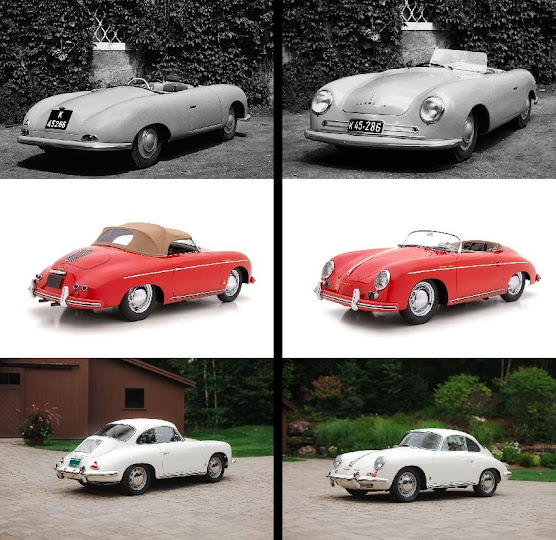Mezzanine (pronounced mez-uh-neen)
(1) In architecture, a low story between two other
stories of greater height in a building, especially when the low story and the
one beneath it form part of one composition; an entresol (in general use
referred to as “mezzanine” or “mezzanine floor”, most historically between the
ground and first levels because so many were added to take advantage of the
high ceilings often found in these voids.
A mezzanine is an intermediate floor (occasionally called a “sub-storey”
or “demi-storey”) which does not extend over the whole floor-space below and
can thus be visualized a kind of (usually large) large balcony overlooking the
floor below; many were atop “grand” staircases which were often the focal point
of ground floors.
(2) By extension (and used loosely), an apartment, room, restaurant
etc on such an intermediate floor.
(3) In theatre (and other performance spaces) design, the
lowest balcony or forward part of such a balcony (North American use and known
sometimes as the “dress circle”), the seats there usually sold either at a
premium or a discount against the “orchestra” seats depending on the structure.
(4) In theatre design, a space under the stage, from
which contrivances such as traps are worked (obsolete).
(5) In financial markets, an intermediate stage in a
financial process, known variously as “mezzanine funding”, “mezzanine capital”,
or “mezzanine debt” (“mezz” the shorthand of traders).
(6) In interior design, an additional layer of flooring,
laid over a floor either to raise the height, conceal imperfections or afford protection
from water penetration (the latter common in server rooms & farms).
(7) As “mezzanine window”, a a small window at the height
of a mezzanine floor or an attic.
(8) In computer hardware, as mezzanine board, the
gender-neutral replacement term for the earlier daughter boards (which plugged
into motherboards (now the gender neutral system board)
(9) In figurative use, any intermediate or ancillary stage
or device (rare except in engineering (engineering) where it’s used to describe
things fulfilling an intermediate or secondary function. Curiously, software engineers & coders
seem not to use the term, possibly to avoid confusion with the hardware
devices.
1705–1715: From the French mezzanine & its etymon the Italian mezzanino (a low story between two higher ones in a building), from mezzano (middle (adjective) & go-between (noun)) the construct being mezzan(o) (in either sense of “middle”), from the Latin mediānus (median; of the middle) + -ino (the diminutive suffix). Mezzano was from the Latin adjective mediānus (central, middle), from medius (mid, middle), ultimately from a construct of the primitive Indo-European root médyos or médhyo (middle)) + -ānus (the suffix meaning “of or pertaining to”). The word was almost exclusive to architects before the early twentieth century when it came to be used on New York’s Broadway to mean “lowest balcony in a theater”, presumably because the use of something so Italianesque might justify charging a premium for the ticket. The Italian mediānus was an element also in words like mediator (an agent who interposes between two parties), medium (that size between big & small) and medieval (a creation of Modern English from the New Latin medium aevum (the middle age, thus pertaining to or suggestive of the Middle Ages), the construct being medi(ānus) (the middle) + aev(um) (age) + -al (the Latin adjectival suffix appended to various words (often nouns) to make an adjective). Mezzanine is a noun & adjective and mezzanining & mezzanined are verbs; the noun plural is mezzanines. Because mezzanine was a particular specification in architecture, historically, adjectives like mezzaninesque or mezzaninish would have been absurd but given the fertile imaginations of those engineering new financial products, they may yet come into vogue.
419 Venice Way, Venice Beach, Los Angeles where during 2011 Lindsay Lohan lived (in the house to the right; the semi-mirrored construction sometimes called a “pigeon pair”) next door to former special friend Samantha Ronson who inhabited the one to the left (417). The four bedroom (3½ bathrooms) house included a floating stairway leading to a mezzanine which the property’s agent described as “ideal for a studio or office”.
419 Venice Way: Ground level showing the floating staircase to the mezzanine (left) and the mezzanine (right).
In casual use, many refer to smaller mezzanines as balconies
but architects note the latter tend to be installed on a building’s exterior
while a mezzanine is inherently an indoor feature. While the motifs of ether can be used either
inside or out, by convention the indoor/outdoor convention of use dictates the
choice of nomenclature. A mezzanine is
an intermediate level which is built with a partial floor which doesn’t fully
cover the floor and historically many were added between the ground and first
levels to take advantage of the high ceilings often found in these voids, many
featuring the so-called “grand staircases” which were often the focal point of ground
floors. By contrast, a balcony is an
elevated platform typically attached to the upper exterior of a building to
provide a space onto which people may sit or stand for a variety of purposes.
Lobby (foyer) of Stamford Plaza Brisbane, Queensland, Australia with the “grand staircase” leading to the mezzanine. Wedding photographers are especially fond of big staircases because they provide the ideal base for the train of a bride’s dress to fall in a photogenic way.
Penta Mezzanine’s conceptual diagram of mezzanine financing.The
idea of mezzanine financing emerged in the US early in the twentieth century and
is a highly variable mechanism involving a hybrid mix of debt and equity, the
use of mezzanine in this context reflecting its “middle or intermediate” position
between senior debt and equity in the corporate structures. Mezzanine was a niche in US capital markets until
the early post-war years when un-met demand in the gap between conventional
(secured) bank loans and equity investment was identified and in the buoyant trans-Atlantic
economy of the era it proved ideally suited to the increasingly popular leveraged
buyouts (LBOs) and mergers & acquisitions (M&A) because of the flexibility
and the acceptance of subordinated forms of capital. By later standards the use of mezzanine instruments
was on a small scale but the techniques developed lad the basis for the boom in
corporate financing which flared in the newly deregulated environment of the 1980s
and 1990s when the volume LBOs & M&A activity was such that some institutions
were able to devote entire divisions to service the market.
Mezzanine financing is now part of financial industry in just about every developed economy and provides a source of capital combines debt and equity, almost always at a higher cost than traditional arrangements so while not regarded as a “last resort” in the way that term in used in banking, the device exists to fill the shortfall (ie the bit “in the middle”) between need and what conventional sources decide is justified by the risk. Demanding (1) a premium interest rate to provide capital which is subordinated to other debts in the case of liquidation or bankruptcy & (2) taking an equity position are the ways the risk-reward math can be made to work for both parties and mezzanine financing continues to exists because it fulfills a need, thus ensuring there is both supply & demand to sustain the model.








%20Music%20Video%202005.jpg)









